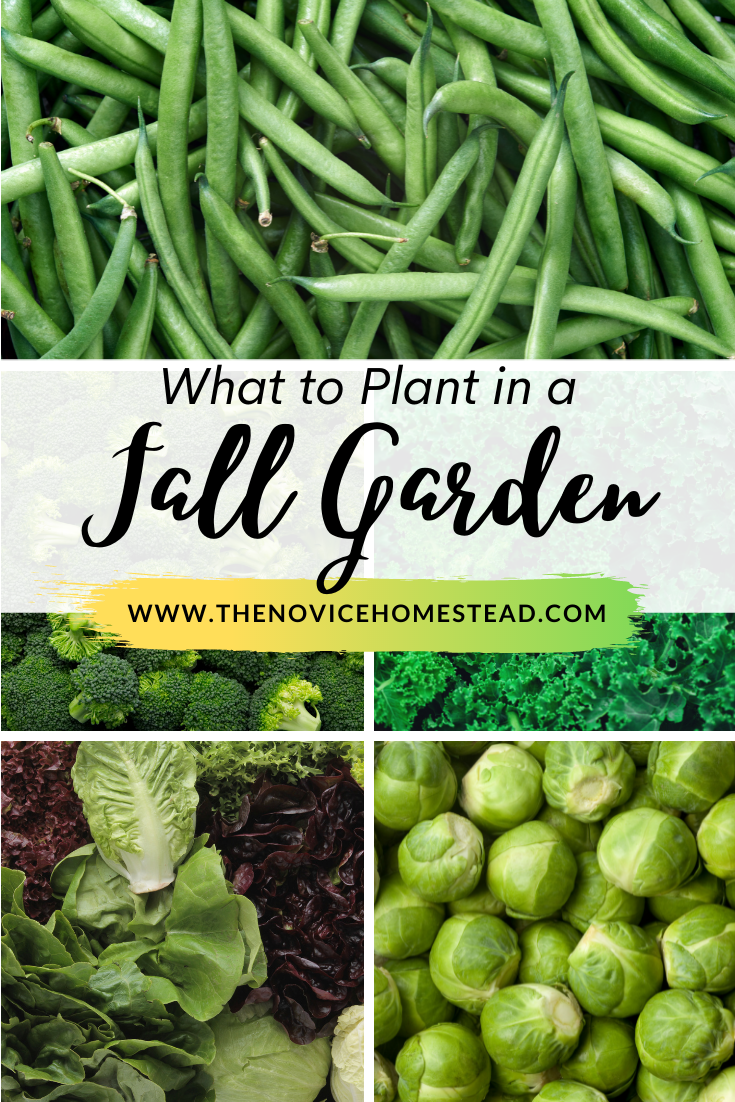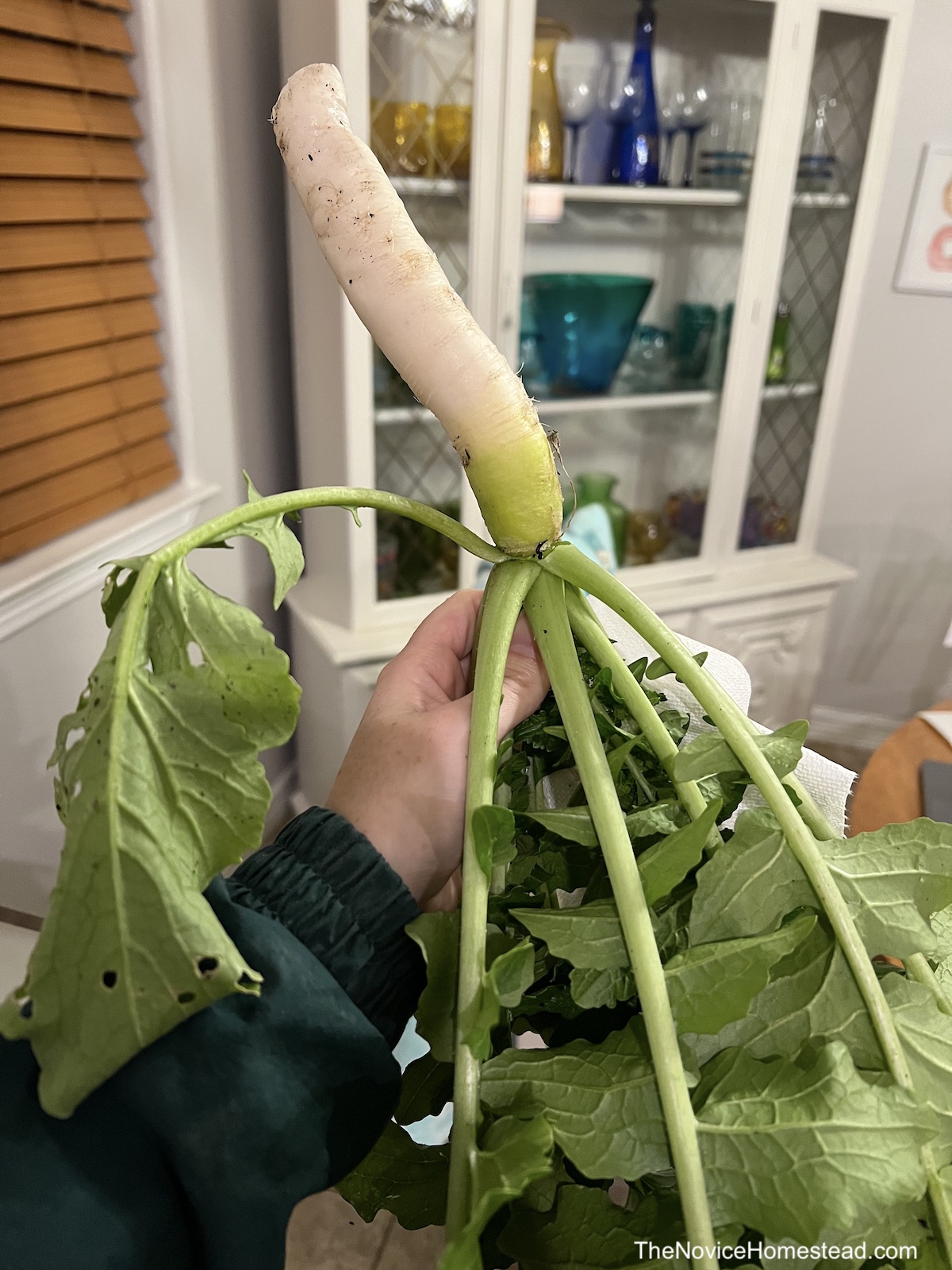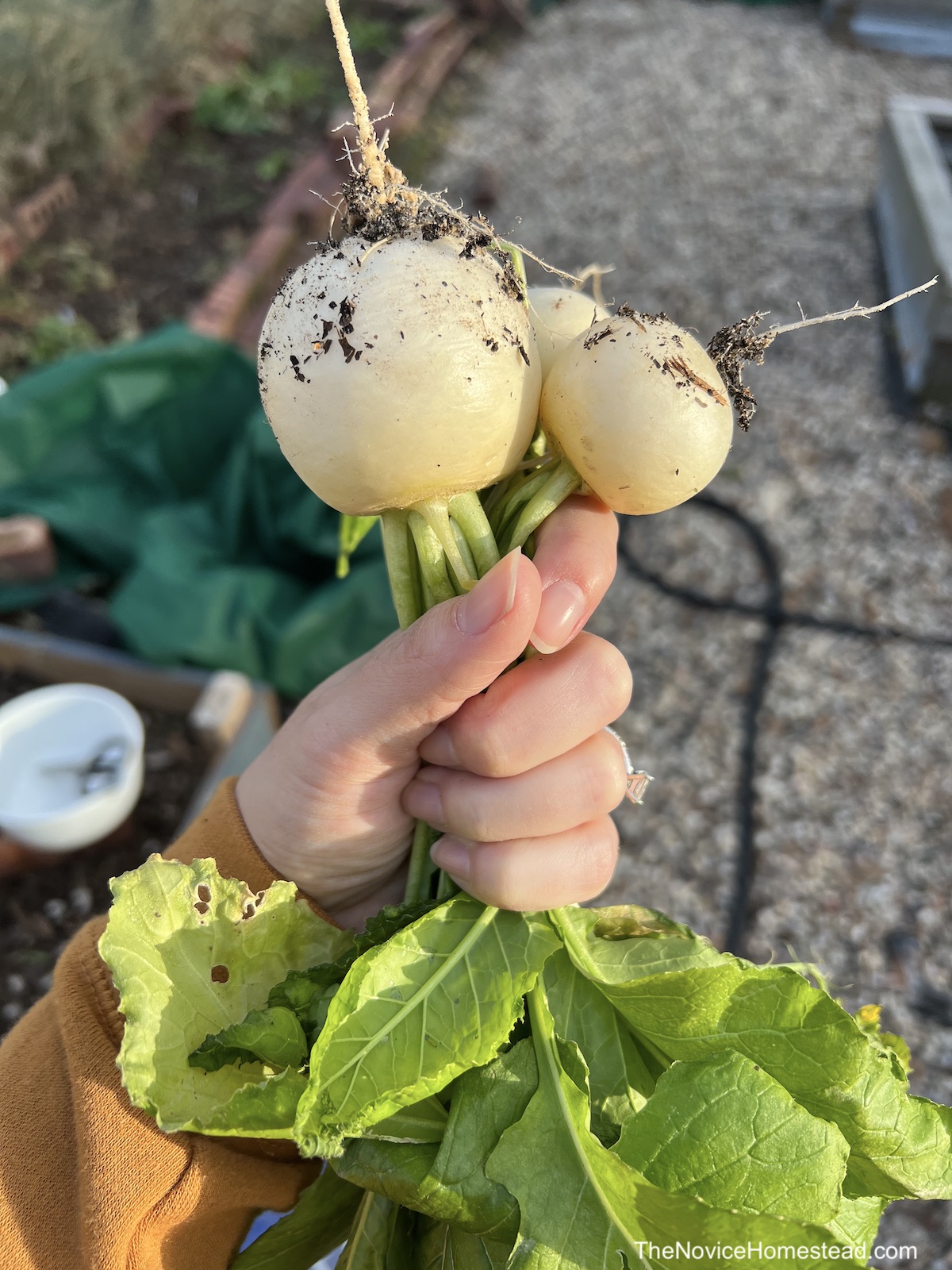Just because the weather is turning cooler doesn’t mean you can’t grow a vibrant crop of vegetables! Keep reading to learn 16 things you can plant in a fall garden!

Are you wondering what to plant for a fall garden? If you’re ready to start growing your own food during more months out of the year than just the summer, learning how to grow your own food for the fall is a great idea.
With how easily you can plant a garden in small spaces, there’s no reason why starting a small fall garden should wait.
Here are the best vegetables to plant for a fall garden.
When Should You Plant A Fall Garden?
The best time to plant a fall garden is mid to late summer, when you’re past the hottest days of the year, but the days are still warm. This will give your plants enough time to grow and mature before the first frost.
This post has more tips about finding your USDA Plant Hardiness Zone to determine suggested planting times where you live.

16 Things To Plant In A Fall Garden
These are some of the vegetables that I plant in my fall garden:
Lettuce
Lettuce favors temperatures in the range of 60-70°F so it makes the perfect spring and fall crop. If planting lettuce in your fall garden, direct sow in later summer. You can continue to plant lettuce every 2-3 weeks through early fall to ensure that you have plenty to last throughout the season.
The great thing about lettuce is that many varieties reach maturity in as little as one month! Some can also be harvested early and used as microgreens or baby greens.
Kale
Kale is actually an incredibly versatile vegetable. It grows well during the spring, summer, fall, and if you live in areas with a mild winter, you just might be able to get kale all year long. In my part of Texas, kale does grow all year long, but it really struggles during the hot and dry summer months. I plant in spring and fall, so I have healthy plants at all times.
I start my kale seeds indoors, a few weeks before I plan to transfer them outdoors. In spring, I start the seeds about 6-8 weeks before the last frost date. In fall, I put my seedlings in the ground in late August. The ideal time for you will depend on your zone and climate.

Broccoli
Broccoli is a relative of kale and can also be grown pretty much year round. In areas with mild winters, broccoli is the perfect fall crop because it can survive a light frost.
Carrots
Carrots may be a year-round crop, but they really thrive in the cool spring and cool fall weather. They do take a while to mature, so this is one to plant in late summer so the carrots have plenty of time to grow before frost hits. Succession planting is also recommended; direct sow carrots seeds every 2-3 weeks so you can harvest throughout fall and winter.
When planting carrots in late summer, take care to ensure that the soil is damp enough for the seeds to germinate. Hot, dry weather can prevent them from growing, so daily watering may be needed until the seeds sprout.
Tomatoes
Tomatoes are often thought of as a spring/summer crop, but depending on your climate, you may be able to get a seconds tomato crop in the fall!
Here in Texas, tomatoes don’t fare well in the summer due to the extremely hot temperatures. However, because the fall months are still fairly warm, tomatoes can have enough time to grow and produce fruit before winter arrives.
PRO TIP: How to Grow Bigger and Better Tomatoes
Beets
Beets prefer cooler weather, so the ideal time to plant is 8-10 weeks before your estimated first frost date. Beets planted in the fall should be ready to harvest by the holiday season.
Radishes
Like beets, radishes are an excellent fall crop because they thrive in cool damp weather. Plant radish seeds 4-6 weeks before your first expected frost date.
I love radishes because they grow rapidly and you can harvest quickly.

Turnips
Another root crop, turnips can be grown year round, but they prefer the cooler weather of spring and fall. In some zones with mild winters, you may be able to plant turnips year round.

Cabbage
Cabbage is generally a year-round crop, but if it gets too hot, cabbage will bolt. Here in Texas, I plant cabbage in both the spring and fall, when it really thrives. You can start seeds indoors and move the plants outdoors when the right weather arrives, or you can direct sow.
Winter Squash
Despite the name, winter squash is actually harvested before freezing weather arrives. Winter squash requires a lengthy growing season of at least 3 months, so you’ll want to plan accordingly.
Depending on your zone, you will want to plant winter squash between late May and early August.
Popular varieties of winter squash include:
- Acorn Squash
- Butternut Squash
- Kabocha Squash
- Spaghetti Squash
- Hubbard Squash
Pumpkins
For a Thanksgiving harvest, you will want to plant pumpkins by the end of summer or very early fall. Like winter squash, pumpkins need a long growing season.
Green Onion
Green onions are an extremely hardy plant that you can grow year-round in many areas. I planted green onions from kitchen scraps a few years ago and have been harvesting from those same plants ever since! They’ve survived both extremely hot summers and unseasonably cold weather (for Texas at least!)
Learn More: Find out how to grow green onions from kitchen scraps here!
Potatoes
Often considered a spring crop, potatoes can also be planted in late summer for a fall harvest. You’ll want to get your seed potatoes in the ground by August so they have enough time to grow before then first frost.
Spinach
This leafy green thrives in cooler weather, so it is ideal for both spring and fall planting. When planted in the fall, spinach may be able to survive a light frost if you cover your garden.
Arugula
Like spinach and lettuce, arugula is a great spring and fall crop. Arugula seeds germinate best in cool, damp soil and the plant itself loves temperatures that are between 45-60°F. Use succession planting (sowing seeds every 2-3 weeks) to keep harvesting these flavorful greens throughout fall.
Brussel Sprouts
Brussels sprouts are a broccoli relative, and also do best in cooler weather. Plant in mid to late summer for a fall harvest. Brussels sprouts may also be able to make it through a light frost, so it’s ok if you get a late start on this one!
Before You Plant…
Keep in mind that the planting times in this post are suggestions and your actual idea planting date will depend on your hardiness zone and the weather/climate in your area.
While I have made notes about when I plant certain vegetables, I live in Southeast Texas, so those tips may or may not apply to you. It can be helpful to look up information about your specific zone or network with other gardeners in your area.
More Gardening Tips
- How to Prepare Your Garden For Planting
- Banana Peel Water Plant Fertilizer
- How to Get Rid of Ants in the Garden
- What Things Can You Compost?
- How Often Should You Water Your Garden?
- What Plants Can Survive in Texas in Summer?
- How to Prune Basil
- Peppermint Oil Spray for the Garden
- How to get Slugs, Snails, & Caterpillars Out of Your Garden